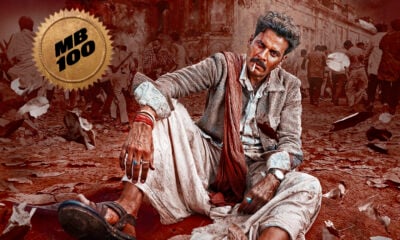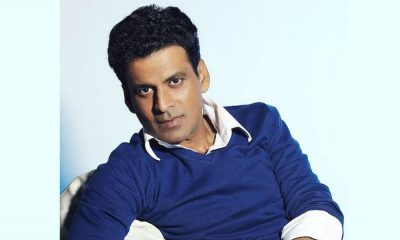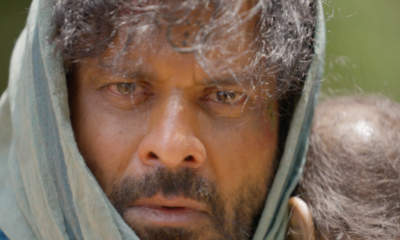Analysis
Sonchiriya: 5 reasons why you should watch the Sushant Singh Rajput starrer
Raw and real – here’s why you should not miss Abhishek Chaubey’s Sonchiriya
Published
5 years agoon

Sonchiriya is metaphorically the search for the elusive – for absolution and redemption. All of us are looking for our Holy grails – or if you speak dacoit – our Sonchiriyas. Abhishek Chaubey’s film Sonchiriya makes an impression for many reasons. Here are the five main pillars that held up Sonchiriya, amongst others.
NO GLAMOURISATION: A dacoit film where despite notoriety as dacoits, the characters were not made to look larger-than-life or like caricatures. They were human. They were immensely fallible. Their nobility was not magnified nor criminality minimised. More than anything, it ventured an insight into the mind of the rebel, who questioned his dharam even though he lived by a code, who suffered agony and guilt even though he could be trigger-happy. And the film portrayed the real hardships in life on the run in the ravines. No, the dacoits were not glorified nor glamourised. Abhishek Chaubey’s takes are raw and real. So the response is gut level. Every single time.
REAL REAL REAL: The fact that the film was shot in real locations lent it credibility like nothing else could. And it must have been no cakewalk, shooting in the arid and mountainous parts of MP, and the Chambal. A logistical nightmare for a cast and crew of near 400 people, to create the most real looking dacoit film made. The shooting in the interiors of Madhya Pradesh distinctly lacked in facilities. The sweat, the grime was all real. The thirst, and the crinkled eyes from too much harsh sunlight was also real. The authenticity and attention to detail in near every aspect- whether it was the dusty and worn clothes, shoes, the gamchas, the windblown hair, the dirt in the fingernails and on their skin wasn’t applied), their hair-cuts, the costuming of each character, the dust in the air, everything looked real.
CINEMATOGRAPHY: The camera work by Anuj Rakesh Dhawan was riveting. Chilling in points and blazing in points, it was the director’s vision translated in the most unaffected manner. The very soul of the ravines, the stillness of the ponds, and the screaming torment of the rebels’ minds… the stench of their sweat came through the screens… the maggots and flies buzzing on a dead snake, the weariness in their pores, the recoil from the staccato firing of machine guns, everything was captured in unforgettable frames.
THE PERFECT CASTING: Every single actor right down to the last member of the supporting cast seemed chiselled from that very soil, landscape, mountains and deserts. Sushant Singh Rajput as Lakhna, dacoit chief – Dadda Man Singh played by Manoj Bajpayee, Ranvir Shorey as Vakil Singh, Bhumi Pednekar as Indumati Tomar, Ashutosh Rana as the blood-thirsty vengeful policeman Virendra Singh Gujjar, and a horde of secondary cast played their parts perfectly. The dialogue delivery was noticeable, and since the Bundelkhandi dialect and accent is uncommon to the regular movie dialogues, it stood out, but rang no false notes. Apparently, in order for the cast to get acclimatised to speaking the accents, they made it mandatory for them to speak the same right through the shooting, even on breaks… sure enough, not one actor slipped up even once. And Halleluiah, in the cause of authenticity, the dialogue which was rife with swearwords, sailed through the CBFC, without cuts, nothing short of a miracle!
HAUNTING MUSIC SCORE: Mercifully bereft of unnecessary songs, what played out in the score was soulfully eloquent and heartbreakingly beautiful music composed by Vishal Bhardwaj. So relieved to know that has not been set aside simply because he aced direction with a string of films. The right notes, and the right voices – Rekha Bhardwaj, Arijit Singh, Sukhwinder Singh, and Rajasthani folk singer Mame Khan nailed it for Varun Grover’s lyrics, except for two songs, Naina Na Maar, which had traditional lyrics, and was recreated by Ashok Mizaj Badr, and the Daaku anthem which had lyrics by Abhishek Nailwal and music by Ketan Sodha.
You may like


Manoj Bajpayee starrer Bhaiyya Ji: First look of the actor revealed!


Manoj Bajpayee starrer The Fable screened at the historic and largest theater Zoo Palast at Berlin International Film Festival


Thithi director Raam Reddy’s The Fable starring Manoj Bajpayee bewitches the audience at the 74th Berlinale International Film Festival


Manoj Bajpayee talks about brand image and success journey in the new season of a Talk Show


Manoj Bajpayee: “If you have the intrinsic strength to become an Institution you do not need to go to any Institution to learn acting”


Manoj Bajpayee starrer Joram now available to rent on Prime Video












